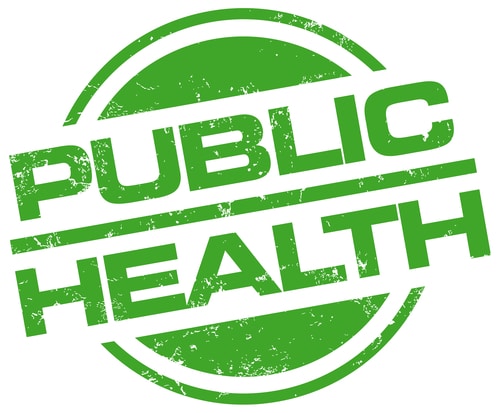Maintaining a healthy lawn naturally requires a holistic approach that focuses on soil health, proper mowing practices, and sustainable management techniques.
By adopting these eco-friendly methods, you can enjoy a beautiful, thriving lawn without compromising the environment or your health. Remember, patience and consistency are key when transitioning to natural lawn care.
Table of contents
- Why should I maintain my Lawn
- How can I make my grass last longer?
- How do you maintain a big lawn?
- 10 Best Rare Tips of Maintaining Your Lawn
- What are the best tools for Maintaining Your Lawn?
- Which fertilizer is best for grass?
- What fertilizer will not burn lawn?
- How long does it take for fertilizer to dissolve in grass?
- How long does fertilizer last?
- How can I treat my lawn naturally?
- Conclusion
- FAQs
A well-maintained lawn is not only beautiful to look at, but it also provides a number of benefits, including:
- Improved air quality
- Reduced soil erosion
- Cooler temperatures
- Increased property value
Why should I maintain my Lawn
There are a number of reasons why you should maintain your lawn. First, it will improve the appearance of your home and property. A well-maintained lawn shows that you take pride in your home and that you care about the appearance of your neighborhood.
Second, a healthy lawn will help to prevent soil erosion. When soil is exposed to the elements, it can be easily washed away by rain or wind.
This can lead to problems such as flooding and landslides. Third, a healthy lawn can help to cool your home in the summer. Grass absorbs heat from the sun, which can help to keep your home cooler and more comfortable.
Finally, a healthy lawn can increase the value of your home. Potential buyers will be willing to pay more for a home with a well-maintained lawn.
How can I make my grass last longer?
There are a number of things you can do to make your grass last longer.
- Choose the right type of grass for your climate. There are many different types of grass, and each one has its own unique requirements.
For example, some grasses are better suited for hot and dry climates, while others are better suited for cool and wet climates.
- Water your lawn properly. Overwatering can be just as harmful as underwatering. The best way to water your lawn is to water it deeply and infrequently. This will encourage the roots of the grass to grow deep into the soil, which will help the grass to survive during periods of drought.
- Fertilize your lawn regularly. Fertilizer provides the nutrients that grass needs to grow strong and healthy.
- Mow your lawn at the right height. Mowing your lawn too short can stress the grass and make it more susceptible to disease.
- Control weeds. Weeds compete with grass for nutrients and water, so it is important to control them.
- Aerate your lawn regularly. Aeration helps to improve drainage and allows air and water to reach the roots of the grass.
- Dethatch your lawn regularly. Thatch is a layer of dead grass that can build up on the surface of your lawn. This can prevent water and nutrients from reaching the roots of the grass.
Related Post: How to Clean a DVD | Full Guide
How do you maintain a big lawn?
Maintaining a big lawn requires a bit more effort than a small one, but it’s definitely doable with the right approach. Here are some tips:
Mow regularly: Depending on the type of grass you have, you’ll need to mow your lawn every 1-2 weeks during the growing season. Be sure to mow at the correct height for your grass type, and avoid mowing when the grass is wet.
Water deeply and infrequently: It’s better to water your lawn deeply and infrequently than to water it shallowly and often. This will encourage your grass to develop deep roots, which will make it more drought-tolerant.
Fertilize your lawn: Your lawn needs nutrients to grow healthy and strong. Fertilize your lawn in the spring and fall, and follow the instructions on the fertilizer label carefully.
Aerate your lawn: Aeration helps to loosen compacted soil and allow air, water, and nutrients to penetrate the root zone. Aerate your lawn in the spring or fall.
Control weeds: Weeds compete with your grass for nutrients and water, so it’s important to control them. You can hand-pull weeds, or you can use an herbicide.
Repair bare spots: If you have any bare spots in your lawn, you’ll need to reseed them. Choose a grass seed that is compatible with your climate and soil type.
Edge your lawn: Edging gives your lawn a clean, finished look. Use a string trimmer or edger to trim the edges of your lawn every 2-3 weeks.
Dethatch your lawn: Thatch is a layer of dead grass that can build up on your lawn and prevent water and nutrients from reaching the roots. Dethatch your lawn in the spring or fall.
Overseed your lawn: Overseeding is a great way to thicken up your lawn and fill in bare spots. Choose a grass seed that is compatible with your climate and soil type.
Topdress your lawn: Topdressing is a great way to add nutrients to your lawn and improve soil drainage. Apply a layer of topdressing in the spring or fall.
10 Best Rare Tips of Maintaining Your Lawn
Maintaining a healthy lawn can be a challenge, especially in harsh climates or with limited resources. Here are 10 rare and effective tips for keeping your lawn looking its best:
Aerate Your Lawn Regularly: Aeration is the process of removing small plugs of soil from the ground, which helps to improve drainage and allow air and water to penetrate the root zone.
This is especially important for compacted soils, which can prevent grass roots from growing properly. Aerate your lawn once or twice a year, depending on the type of soil you have.
Use Compost as a Natural Fertilizer: Compost is an excellent source of nutrients for your lawn, and it can help to improve soil structure and water retention. Instead of using chemical fertilizers, apply compost to your lawn in the spring and fall.
Overseed Bare Spots: As your lawn ages, it’s normal for some areas to become bare. To fill in these spots, overseed with a high-quality grass seed mix. Choose a seed mix that is appropriate for your climate and soil type.
Sharpen Your Mower Blades: Dull mower blades can tear and shred grass leaves, making them more susceptible to disease and pests. Sharpen your mower blades at least once a year, or more often if you mow your lawn frequently.
Water Deeply and Infrequently: Instead of watering your lawn shallowly every day, water deeply and infrequently. This will encourage the grass roots to grow deeper, making them more drought-tolerant. Water early in the morning to allow the water to soak in before it evaporates.
Raise the Mowing Height: Mowing your lawn too short can stress the grass and make it more susceptible to weeds and diseases. Raise the mowing height to 3-4 inches for most types of grass.
Edge Your Lawn: Edging your lawn gives it a clean, finished look and helps to prevent weeds from spreading. Edge your lawn regularly, especially around walkways, driveways, and flowerbeds.
Control Thatch: Thatch is a layer of dead grass that accumulates between the soil and the living grass. Too much thatch can prevent water and nutrients from reaching the roots. Dethatch your lawn once or twice a year, if necessary.
Test Your Soil for pH: The pH of your soil can affect the ability of your grass to absorb nutrients. Test your soil every few years and add lime or sulfur to adjust the pH, if necessary.
Use Native Plants: Native plants are adapted to your local climate and soil conditions, and they require less water and fertilizer than non-native plants. Choose native plants for your lawn and garden to create a more sustainable and environmentally friendly landscape.
Related Post: Top 30 inspirational commercials that sold out their products
What are the best tools for Maintaining Your Lawn?
A well-maintained lawn can be a beautiful addition to your home, but it requires regular care. Here are some of the best tools for maintaining your lawn:
Lawn mower: A lawn mower is the most essential tool for keeping your grass at a manageable height. There are many different types of lawn mowers available, so choose one that is the right size and type for your lawn.
String trimmer: A string trimmer is also known as a weed whacker or weed eater. It is used to trim grass and weeds in hard-to-reach areas, such as around fences, sidewalks, and flower beds.
Edger: An edger is used to create a clean line between your lawn and your sidewalk or driveway. This will give your lawn a more polished appearance.
Leaf blower: A leaf blower is a powerful tool that can be used to clear leaves, twigs, and other debris from your lawn. This is especially helpful in the fall when leaves are falling from trees.
Spreader: A spreader is used to apply fertilizer, herbicides, and other lawn care products evenly to your lawn. This will help to ensure that your lawn gets the nutrients it needs to stay healthy.
Gloves: Gloves will protect your hands from dirt, thorns, and other hazards when you are working in your lawn.
Hose: A hose is used to water your lawn. It is important to water your lawn regularly, especially during hot, dry weather.
Rake: A rake is used to remove leaves, twigs, and other debris from your lawn. It is also useful for leveling out your lawn and spreading mulch.
Aerator: An aerator is used to remove plugs of soil from your lawn, which will help to improve drainage and allow water and air to reach the roots of the grass.
Garden cart: A garden cart is useful for transporting lawn care supplies, such as clippings, leaves, and soil.
These are just a few of the many tools that can be helpful for maintaining your lawn. The specific tools you need will depend on the size and type of your lawn, as well as your personal preferences.
Related Post: Denim Insulation vs. Fiberglass Insulation | How Denim Insulation Works
Which fertilizer is best for grass?
The best fertilizer for a lawn will depend on the type of grass you have, your soil conditions, and your climate.
Milorganite is a slow-release nitrogen fertilizer that is derived from sewage sludge. It has a high N-P-K ratio of 6-4-0, which is ideal for promoting healthy grass growth. Milorganite is also a good source of iron, which can help to green up your lawn.
Espoma Organic Lawn Food is another good option for a natural lawn fertilizer. It is made from a blend of organic ingredients, such as fish meal, feather meal, and kelp. Espoma Organic Lawn Food has a N-P-K ratio of 9-0-0, which is ideal for promoting healthy top growth.
Scotts Turf Builder Lawn Food is a synthetic fertilizer that is available in a variety of formulas. The most popular formula is 32-0-4, which is designed to promote rapid growth and greening. Scotts Turf Builder Lawn Food is also a good source of phosphorus, which can help to develop strong root systems.
No matter which fertilizer you choose, it is important to apply it according to the directions on the label. Over-fertilizing your lawn can damage your grass and pollute your water supply.
In addition to fertilizing your lawn, you can also help to promote healthy grass growth by watering deeply and infrequently, mowing your lawn to the correct height, and controlling weeds.
Here are some additional tips for choosing a fertilizer for your lawn:
Consider your grass type. Different types of grass have different nutrient needs. For example, cool-season grasses, such as fescue and ryegrass, need more nitrogen than warm-season grasses, such as Bermuda grass and Zoysia grass.
Test your soil. Your soil may be deficient in certain nutrients, such as phosphorus or potassium. Testing your soil can help you to determine which nutrients your lawn needs.
Consider the time of year. In the spring, your lawn needs more nitrogen to promote growth. In the fall, your lawn needs more phosphorus to store nutrients for the winter.
Choose a fertilizer that is appropriate for your lawn’s size. Some fertilizers are designed for small lawns, while others are designed for large lawns.
Related Post: How Sump Pumps Work | Full Guide and Details
What fertilizer will not burn lawn?
Here are some types of fertilizers that are less likely to burn your lawn:
Slow-release fertilizers: These fertilizers release nutrients gradually over time, which helps to prevent fertilizer burn. Some slow-release fertilizers are also designed to release nutrients only when the soil is moist, which further reduces the risk of burn.
Organic fertilizers: These fertilizers are derived from natural sources, such as animal manure or compost. They are typically lower in salts than synthetic fertilizers, which makes them less likely to burn your lawn.
Milorganite: Milorganite is a type of organic fertilizer that is made from treated sewage sludge. It is a slow-release fertilizer that is low in salts and will not burn your lawn.
Iron sulfate: Iron sulfate is a mineral that can be used to green up your lawn and prevent moss growth. It is also a good source of iron, which is essential for healthy grass growth. However, iron sulfate can be acidic, so it is important to apply it according to the directions on the label.
How long does it take for fertilizer to dissolve in grass?
The amount of time it takes for fertilizer to dissolve in grass depends on several factors, including the type of fertilizer, the soil moisture, and the temperature.
In general, most granular fertilizers will begin to dissolve within a few days to a couple of weeks after application. However, some slow-release or controlled-release fertilizers may take several weeks to several months to fully dissolve and release nutrients into the soil.
Here is a more detailed breakdown of the factors that affect the dissolution rate of fertilizer:
Type of fertilizer: Granular fertilizers dissolve more slowly than liquid fertilizers. This is because granular fertilizers are made up of small pellets that need to be broken down by water before they can release their nutrients.
Slow-release fertilizers are designed to dissolve over a longer period of time, so they may take several weeks or months to fully dissolve.
Soil moisture: Fertilizer dissolves more quickly in moist soil than in dry soil. This is because water is needed to break down the fertilizer pellets and release the nutrients.
If the soil is too dry, the fertilizer will not dissolve properly and the plants will not be able to absorb the nutrients.
Temperature: Fertilizer dissolves more quickly in warm temperatures than in cold temperatures. This is because the chemical reactions that break down the fertilizer pellets are more active in warm weather.
If the temperature is too cold, the fertilizer may not dissolve properly and the plants will not be able to absorb the nutrients.
How long does fertilizer last?
If you are unsure whether or not fertilizer is still good, you can test it by applying a small amount to a plant. If the plant shows signs of improvement, then the fertilizer is still good to use. If there is no improvement, then the fertilizer is no longer effective and should be discarded.
The shelf life of fertilizer depends on the type of fertilizer, storage conditions, and environmental factors.
Granular fertilizers can last indefinitely if stored properly in a cool, dry, and dark place. This is because the nutrients in granular fertilizer are not easily broken down by moisture or sunlight.
Liquid fertilizers can last for 2-3 years if stored properly in a cool, dry, and dark place. However, if liquid fertilizer is exposed to freezing temperatures, it can lose its effectiveness.
Organic fertilizers, such as compost and manure, can last for several months to a year or more if stored properly. This is because the nutrients in organic fertilizer are slowly released over time.
Related Post: How to Get Rust Off Stainless Steel
How can I treat my lawn naturally?
A lush, green lawn enhances the curb appeal of your home and provides a welcoming outdoor space for relaxation and recreation. However, many conventional lawn care practices rely on chemical fertilizers and pesticides, which can harm the environment and potentially pose health risks.
Fortunately, there are effective and eco-friendly ways to maintain a healthy lawn without resorting to harsh chemicals.
Soil Testing and Improvement:
The foundation of a healthy lawn lies in healthy soil. Start by testing your soil’s pH level, which should ideally be between 6.5 and 7.0. If the soil is too acidic or alkaline, apply amendments such as lime or sulfur to adjust the pH.
Additionally, incorporate organic matter like compost or aged manure to improve soil structure, water retention, and nutrient content.
Choosing the Right Grass Type:
Select a grass variety that is well-suited to your climate and soil conditions. Consider factors such as shade tolerance, drought resistance, and foot traffic when making your choice. Native grass species are often a good option, as they are adapted to local conditions and require less maintenance.
Proper Mowing Techniques:
Regular mowing is essential for lawn health and aesthetics. Set your mower blades to a height of 3-3.5 inches, as this allows the grass to develop a deep root system and provides shade for the soil, reducing moisture evaporation.
Avoid mowing too short, as this weakens the grass and makes it more susceptible to weeds and diseases.
Deep Watering and Aeration:
Watering deeply and infrequently encourages the grass to develop deep roots, making it more resilient to drought and stress. Water early in the morning to allow the grass to absorb moisture before the heat of the day.
Aeration, the process of puncturing the soil to improve air circulation and water penetration, is beneficial for compacted soils.
Natural Fertilization:
Instead of chemical fertilizers, opt for organic alternatives such as compost, manure, or fish emulsion. These natural fertilizers release nutrients slowly, promoting steady growth and minimizing environmental impact.
Weed Control:
Hand-pulling or spot-treating weeds with natural solutions like vinegar or boiling water can effectively control small weed infestations. For larger areas, consider using organic weed control products that contain natural ingredients like clove oil or corn gluten meal.
Pest and Disease Management:
Healthy lawns are less susceptible to pests and diseases. Encourage beneficial insects, such as ladybugs and lacewings, by planting native flowers and avoiding pesticides that harm these beneficial predators. If pests or diseases do occur, consider using natural alternatives like neem oil or insecticidal soap.
Thatch Management:
Thatch is a layer of dead grass that accumulates between the living grass and the soil. Excessive thatch can impede water and nutrient uptake and create a haven for pests and diseases.
If thatch buildup becomes excessive, consider dethatching using a manual dethatching rake or a power dethatcher.
Related Post: Wake Robin: All You Need To Know About The Plants
Conclusion
Maintaining a healthy lawn requires time and effort, but it’s worth it to have a beautiful outdoor space to enjoy. By following these rare tips, you can keep your lawn looking its best year-round.
FAQs
The frequency of watering will depend on your climate, soil type, and grass type.
The best time to mow your lawn is early in the morning, when the grass is still damp. Mowing in the heat of the day can stress the grass.
There are a number of ways to control weeds in your lawn, including hand weeding, using herbicides, and mowing regularly.
References
- almanac.com/tips-maintaining-beautiful-yard
- bestpickreports.com/tips-on-maintaining-the-perfect-lawn/
- lawnweedexpert.co.uk/lawn-care-tips
- joshuatreeexperts.com/lawn-maintenance-tips





